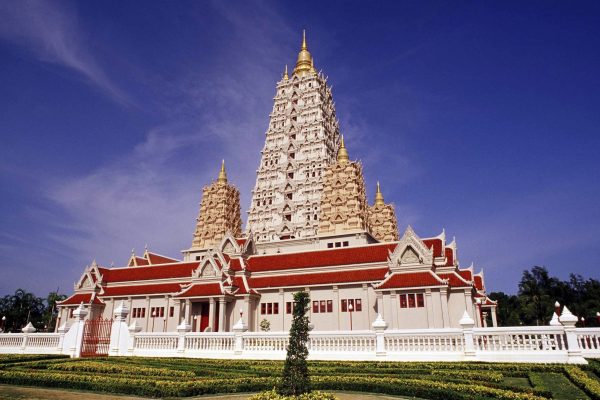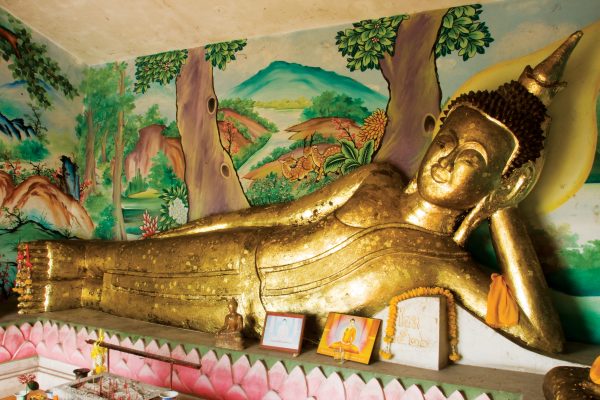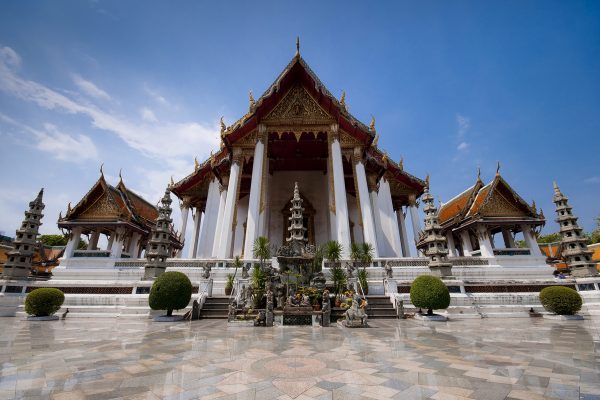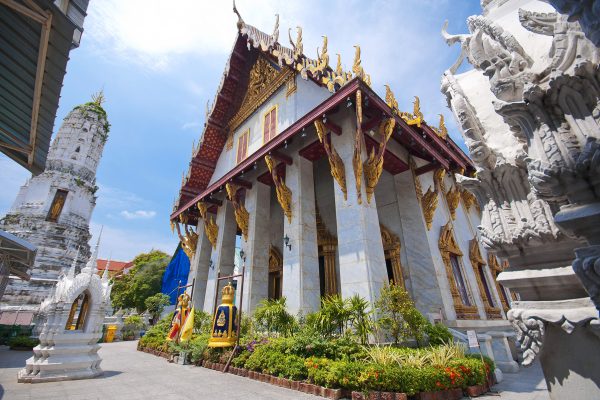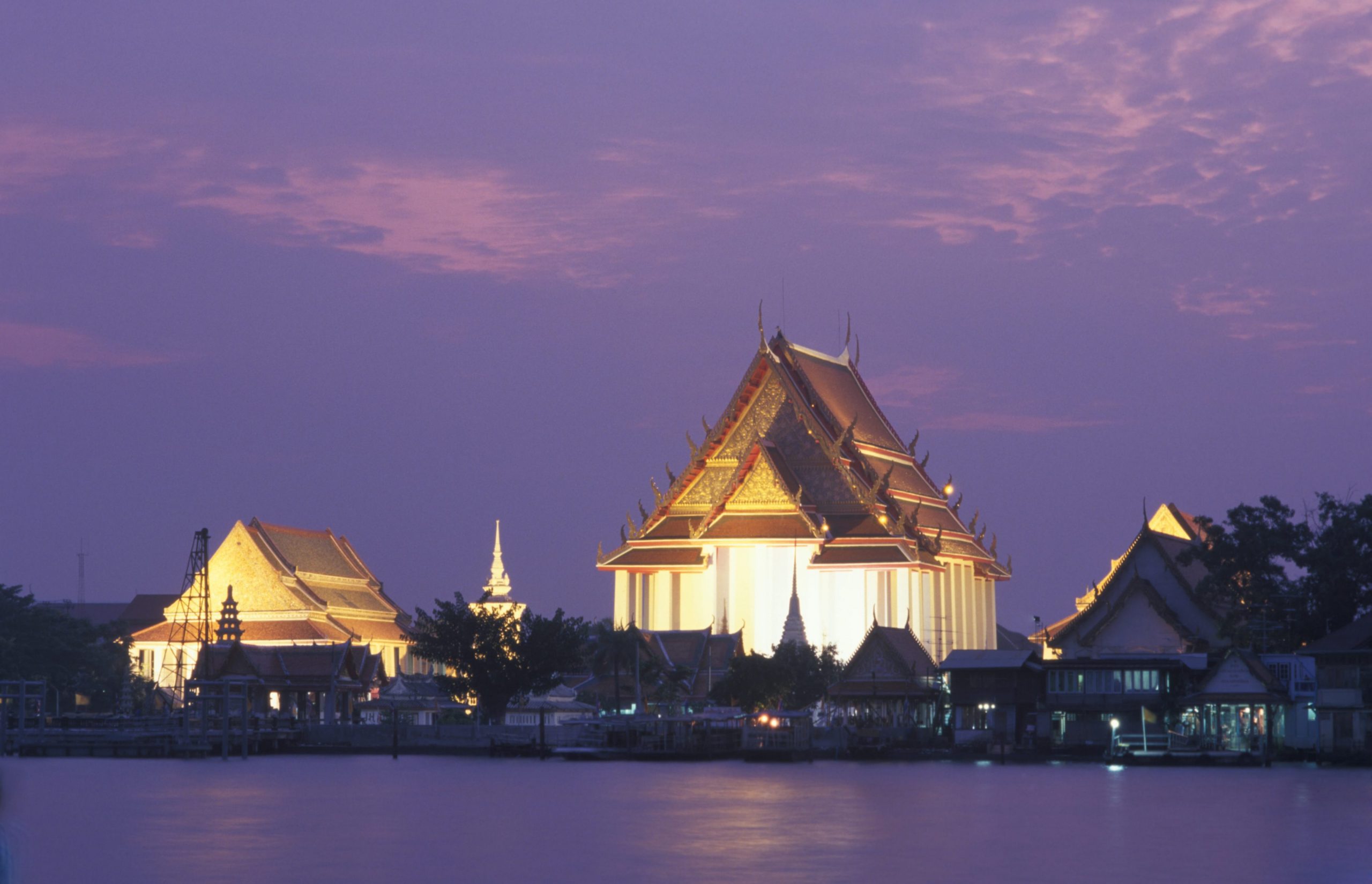
Wat Kalayanamit Woramahawiharn
Wat Kalayanamit Worahamawiharn (Wat Kalaya) is a second class royal temple in ‘Woramahawiharn’ type. It is located beside Chao Phraya river, Thonburi side, around the mouth of Bangkok Yai canal.Initially, Chao Phraya Nikorn Bodin (Toh Kalayanamit) donated his house to Somdet Phra Nang Klao Chao Yu Hua (King Rama III), and bought the additional land nearby to build a temple in 1825. The king bestowed the name to the temple as “Wat Kalayanamit”.Later, he built a royal wiharn, and also the principle Buddha image to enshrine inside, which is Luang Por Toh (or Phra Buddha Trai Rattanayok). The king aimed to model the size and the location of the statue to resemble the enormous Buddha statue by the river in Wat Panan Choeng from the old capital. Luang Por Toh has been highly revered by Chinese people, they call him in Chinese name as ‘Sam Por Hug Kong’ or ‘Sam Por Kong’. This Buddha image was made from plaster, in ‘Marn Vichai’ posture (subduing Mara). The statue is 10 meters 3 cubits wide, 14 meters 2 cubits high 10 inches. Phrabat Somdet Phra Nang Klao Chao Yu Hua ordered the construction to Chao Phraya Nikorn Bodin on May 18th 1837. Luang Por Toh is enshrined in the gigantic wiharn in the center of the temple, between a small wiharn and Phra Ubosot. In front of the royal wiharn is a bell tower, which preserves the biggest bell in Thailand.Inside Phra Ubosot, (smaller to the wiharn), there is where the Buddha image in ‘Palilai’ posture (Buddha sitting position with legs simply hanging down, left handed palm on his knee) built by King Rama III. Wat Kalayanamit is the only the temple in Thailand that has the principle Buddha image in Palilai posture. Inside, there are mural paintings depicting biography of Lord Buddha, and villagers’ way of life during the reign of King Rama III. In the temple area, there is Hor Phra Tham Monthian Thaloeng Phrakiat (Buddhist library) where Pali Buddhist scriptures have been kept as well.Wat Kalayanamit Woramahawiharn, not only holds cultural value, but also immensely holds historical value, and Thai societal value.The temple is open every day, with no admission fee for any visitors, and travelers.

